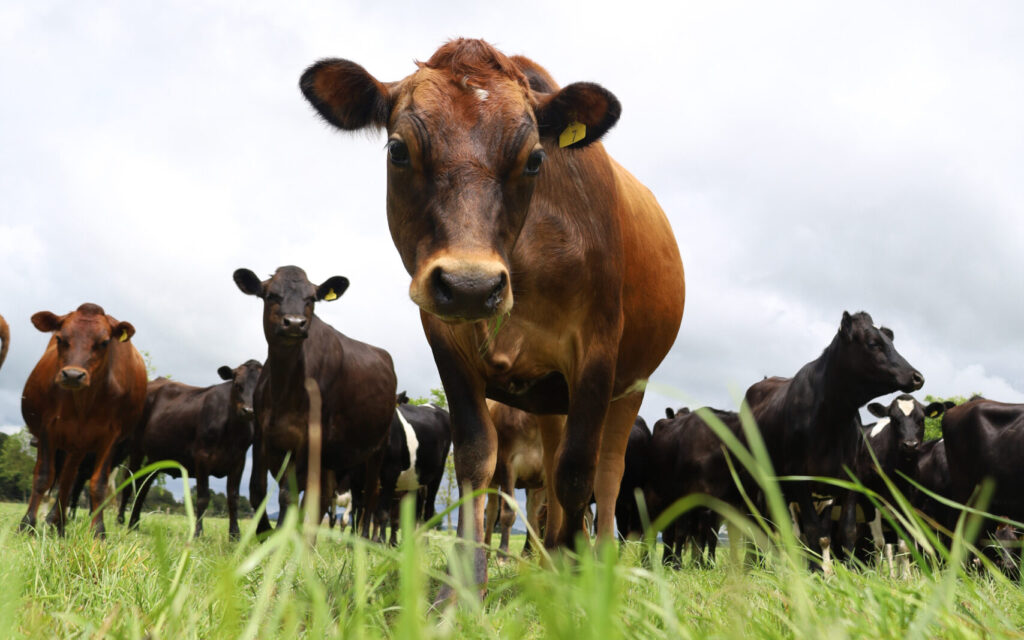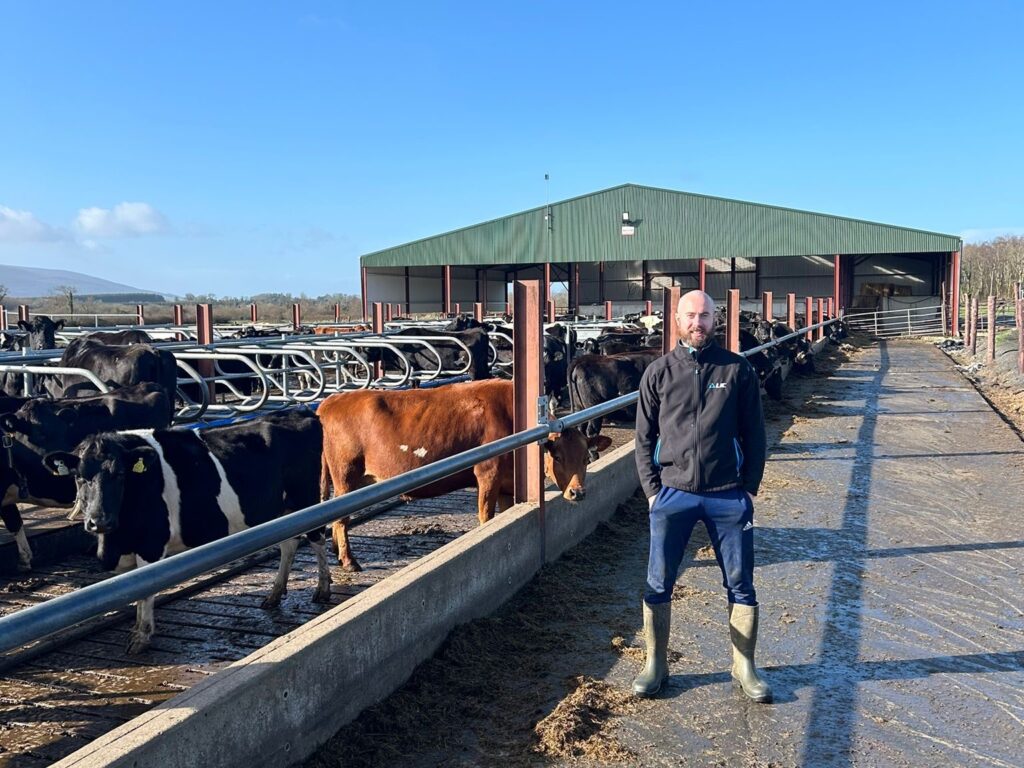Keeping it simple and doing everything to a high standard. That’s the ethos behind Ian Kingston’s farming business, where the emphasis is on growing and utilising as much grass as possible.

Keeping it simple and doing everything to a high standard. That’s the ethos behind Ian Kingston’s farming business, where the emphasis is on growing and utilising as much grass as possible.
Ian and his family farm at Sillertane, Dunmanway in County Cork and were recent winners of the Carbery milk quality and sustainability awards. Farming on a high, exposed farm, running from 440 to 850 feet above sea level and with an average rainfall always above two metres, brings its own challenges. But the Kingston’s have learnt to live with them and love the natural environment that surrounds this unit.
“My grandfather bought the farm in 1911. My father took over from him, and I took over fully in 2008. Although, my parents live just down the road and still take a very active interest in what happens here,” Ian explains.
Ian started farming in 1987 after completing his Green Certificate from Clonakilty Agricultural College. Over the years, the farm has expanded quite a bit, with milk quota purchased to allow the herd to expand, and neighbouring land leased. Starting with just 50 cows, numbers increased to 110 by the early 2000s and today there are 187 crossbreds that graze the 83ha milking block. They farm 96ha in total and replacement youngstock are also reared on the farm.
“We were constantly improving the land we owned – putting in drainage, doing more reclamation and boosting soil fertility, as well as investing in the cows we milked,” he says. “We embraced the EBI when it came into being over 20 years ago. At the time New Zealand bulls were ranked high on EBI and we have pretty well stuck with these genetics over the years, choosing New Zealand bulls based on milk solids and fertility. I have attended a lot of grazing group meetings and, from other producers, soon picked up the value these bulls were adding to Irish herds.
Efficient, fertile and healthy cows are key
“Our aim is to produce efficient, fertile and healthy cows able to convert our grass into profitable milk – and sometimes that has been quite a challenge. We’ve bred a herd of cows that suit our system of farming rather than the cows dictating how the farm is managed.”
Ian aims for cow bodyweight to be between 480 and 520 kgs, believing a larger animal would not suit his land type. “I feel [a bigger cow] would use more of her feed intake maintaining herself rather than producing the milk solids I want.”
But fertility is key, as without it he will see losses in overall days in milk, so his number one priority is to get as many cows inside a tight six-week calving block as possible. This year he achieved 85% of calvings within that window, and the whole herd was calved within 13 weeks, with the first producing from the start of February.
His replacement rate is around 18-20% so he aims to keep 35 heifer calves each year, using sexed semen on his best cows. He’s been using sexed for two years now and is happy with his conception rates which are in the high 50s. Last year he used 78 sexed straws and got 37 heifer calves and three bulls.

Reliance on high-quality grass
Ian’s system runs on minimal labour. Both his wife Marie and son Dylan look after the calf rearing. They also have help from Ian’s mother Kathleen and a part time employee. Dylan, at 16 years of age, is already showing a lot of interest in carrying on the farming tradition. He enjoys checking the cows daily and getting involved in milking. Ian also employs a milker three evenings per week throughout the main season.
The farm has a mixed soil type, consisting of both dry and heavy soils, and with additional land purchased over the years, up to half the farm has been reclaimed. They soil sample every three years, and the fertility programme followed has improved pH as well as P and K levels, vital for a farm relying on growing and utilising high-quality grass.
In 2022 the farm grew an excellent 11.7 tonnes/ha of grass. Ian believes that grass measuring throughout the season helps tremendously, allowing him to budget grass in both the spring and autumn. He targets a closing cover of 600kg/DM on December 1.
His target is to get the cows out to grass as soon after calving as possible, so they have access to high quality swards. If the weather is suitable, they will go out three or four days after calving and are left out for a couple of hours in the morning and a further two hours after milking in the evening.
With growing pressure on nitrogen usage, more clover is being added to his swards.
“We have to be mindful of the growing environmental constraints we are going to be farming under,” he says. Last year he included 2kgs white clover and 2kgs red clover into his grass mix and he is already seeing a benefit by managing to reduce his nitrogen usage.

Genetics improving year-on-year
Using LIC genetics, he chooses for fertility first. This season he has gone for Friesians Kauri and Backdrop, and Jerseys Lamar and Gallivant. He has also used some Norwegian Red to put more hybrid vigour into the cows and is happy with the results.
“Using LIC genetics I’ve seen a steady improvement in my fat and protein figures,” he says, “There is still some room for further improvement, so considering solids production in my bull choice is still very important.”
In 1982, the milk composition was 3.50% fat and 3.16% protein. This improved to 3.78% fat and 3.39% protein by 2002. In 2012, it increased to more than 4.34% fat and 3.46% protein, and in September 2023, increased even further to 5.01% fat and 4.08% protein.
“My target is an annual result of 5% and higher for fat, and 4% and higher for protein” he says. “Of course, I want the same weight, or higher, of solids married to the weight of my cows.”
Finally, Ian says the physical conditions on his farm are his main constraint moving forwards. While he’s now growing an average of 11.7 tonnes/ha of grass compared with 9 tonnes/ha, thanks to all his improvement work, his stocking rate is now as high as it can be for the land.



